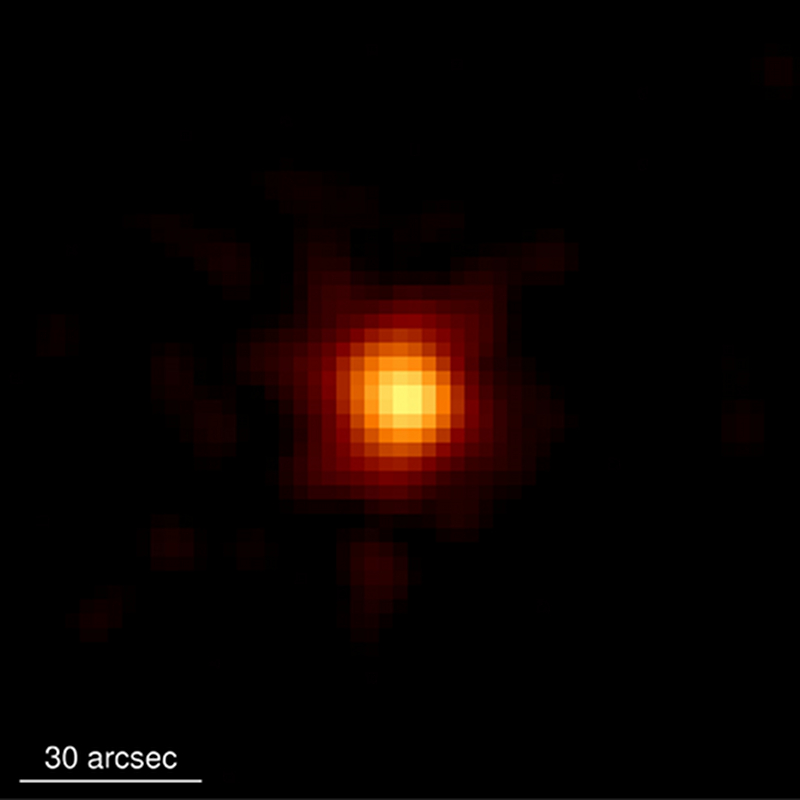
 Credit: Swift; NASA; A. Cucchiara et al.
Credit: Swift; NASA; A. Cucchiara et al.
Now Who's Farthest?
Astronomers like to push limits, and almost nothing excites astronomical competition like finding the most distant known object. This competition is not merely for bragging rights in the astronomical community; looking back at objects at great distances provides a probe of the Universe in its infancy, and helps us understand how we got from that exotic state to the more mundane environs in which we currently find ourselves. Bright objects like galaxies and quasars can be seen out to the edge of the Universe. So too can gigantic explosions called Gamma-ray bursts. Gamma-ray bursts are produced by the conversion of a supermassive star at its death into a massive black hole. The simple image above shows one such explosion, called GRB 090429b, detected by the Swift Gamma-ray burst observatory at earth on April 29, 2009 (as its name implies). Some astronomers believe that light from this burst has been traveling more than 13 billion years through dark space in its journey towards earth, which means it began its journey when the Universe was only 4% its current age. This makes GRB 090429b the latest contender for the most distant object (or most distant event) ever seen. An exciting idea - perhaps we just witnessed the birth of one of the first black holes ever to form in the Universe?
Published: July 25, 2011
<
HEA Dictionary ● Archive
● Search HEAPOW
● Other Languages
● HEAPOW on Facebook
● Download all Images
● Education ● HEAD
>

Each week the HEASARC
brings you new, exciting and beautiful images from X-ray and Gamma ray
astronomy. Check back each week and be sure to check out the HEAPOW archive!
Page Author: Dr. Michael F. Corcoran
Last modified Tuesday, 27-Feb-2024 10:15:15 EST


